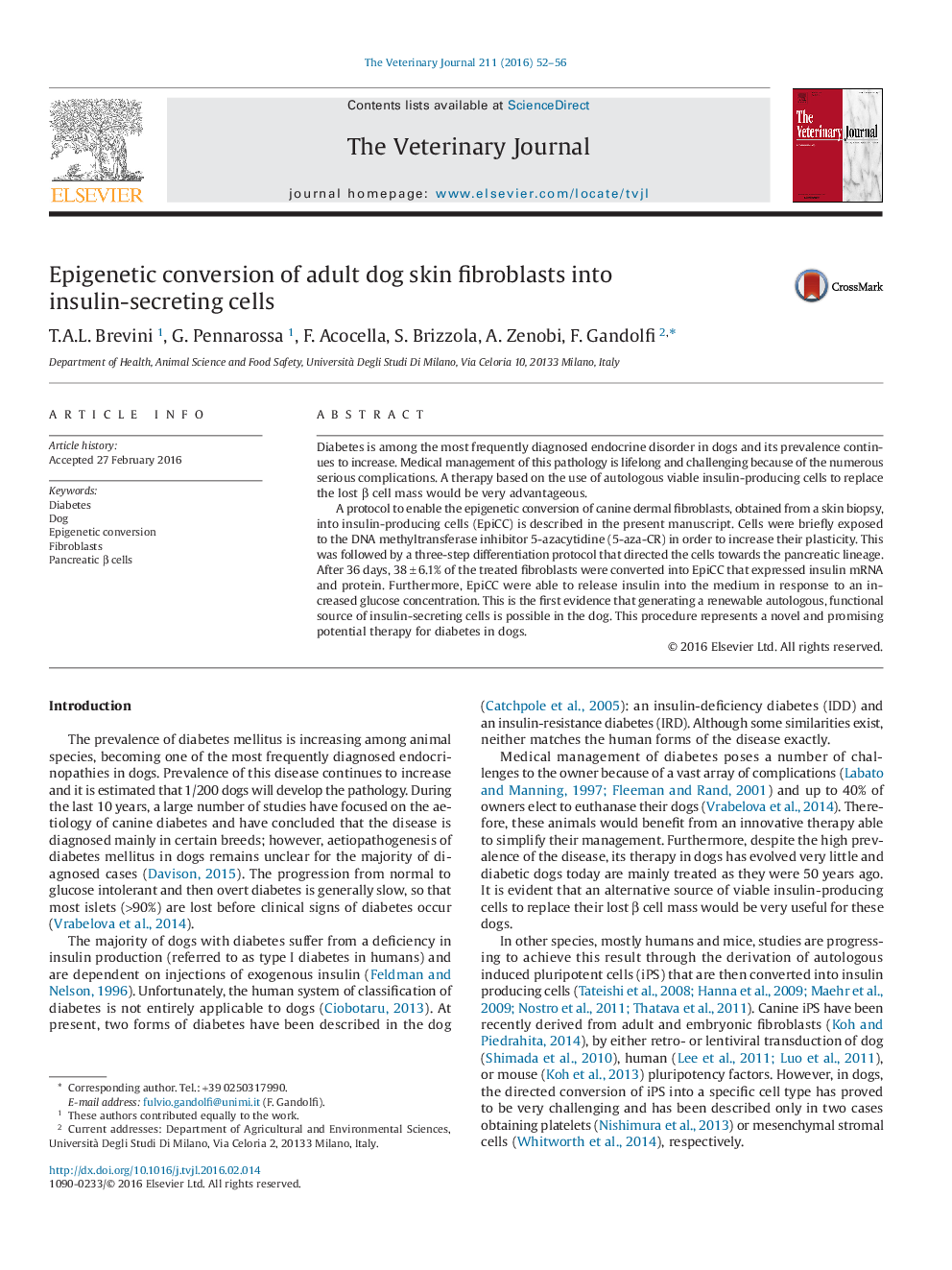| Article ID | Journal | Published Year | Pages | File Type |
|---|---|---|---|---|
| 2463703 | The Veterinary Journal | 2016 | 5 Pages |
•Epigenetic cell conversion was used to derive insulin-secreting cells from adult dogs' dermal fibroblasts.•Insulin-secreting cells were derived from three dogs with similar efficiency.•Nearly 39% of the cells contained insulin and C-peptide mRNA and protein.•Cells were able to respond to a glucose challenge secreting insulin.•These cells represent the first renewable, autologous and functional source of insulin-secreting cells available in the dog.
Diabetes is among the most frequently diagnosed endocrine disorder in dogs and its prevalence continues to increase. Medical management of this pathology is lifelong and challenging because of the numerous serious complications. A therapy based on the use of autologous viable insulin-producing cells to replace the lost β cell mass would be very advantageous.A protocol to enable the epigenetic conversion of canine dermal fibroblasts, obtained from a skin biopsy, into insulin-producing cells (EpiCC) is described in the present manuscript. Cells were briefly exposed to the DNA methyltransferase inhibitor 5-azacytidine (5-aza-CR) in order to increase their plasticity. This was followed by a three-step differentiation protocol that directed the cells towards the pancreatic lineage. After 36 days, 38 ± 6.1% of the treated fibroblasts were converted into EpiCC that expressed insulin mRNA and protein. Furthermore, EpiCC were able to release insulin into the medium in response to an increased glucose concentration. This is the first evidence that generating a renewable autologous, functional source of insulin-secreting cells is possible in the dog. This procedure represents a novel and promising potential therapy for diabetes in dogs.
